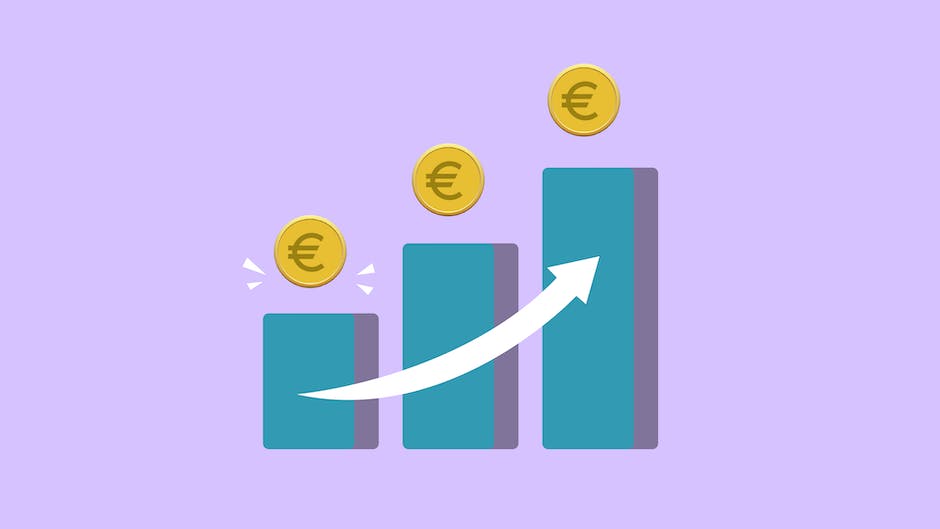Embarking on the journey of securing your retirement future often requires familiarizing oneself with various financial instruments whose complexity can seem daunting. One essential planning tool at your disposal is Individual Retirement Accounts (IRAs), offering certain tax advantages for retirement savings. However, as an investor, one of the pivotal decisions you have to make concerns the choice between variable and fixed IRA rates. This choice invariably impacts your savings’ growth and stability, and as such, its importance cannot be overstated. This paper aims to demystify the intricacies of IRAs, focusing on variable and fixed rates, and equip you, the investor, with vital information that can aid your selection process.
Understanding Individual Retirement Accounts (IRAs)
Understanding Individual Retirement Accounts (IRAs)
An Individual Retirement Account (IRA) is an investment vehicle for individuals to save towards their retirement. It is often the central pillar to retirement planning. An IRA provides specific tax benefits that include tax-free or tax-deferred growth of retirement savings.
Variable VS Fixed IRA Rates
When it comes to the growth of IRA savings, two terms often surface: fixed and variable rate IRAs. These terms refer to how the returns on your IRA contributions are calculated.
A fixed-rate IRA is giving you a specified percentage of return on your investment. It means that the amount of interest you earn on your IRA is fixed, regardless of how the financial markets are performing. For instance, if you have an IRA with a fixed rate of 2%, the growth of your savings will be exactly 2% annually. The security of a constant return can be the prominent advantage of a fixed rate IRA, but the potential for greater growth is limited.
On the other hand, a variable rate IRA return fluctuates according to market performance. This means that the return on your IRA investment will reflect the ups and downs of the financial markets. Your IRA could generate substantial growth during a strong market performance. However, during downturns, profits may be minimal or even absent. Thus, the main advantage of a variable rate IRA is the potential for high returns, but at a greater risk.
Deciding Between Fixed and Variable IRA Rates
When it comes to your retirement funds, determining whether to opt for a fixed or variable IRA rate can be heavily dependent on your risk tolerance and income requirements during your retirement. The appeal of a fixed rate IRA lies in its consistency and predictability, a comfort for those who value stability. However, if you’re open to financial risk with the potential of achieving higher yields, a variable rate IRA could potentially be a more ideal choice.
The timeline of your investment is another factor that should weigh in on your decision between fixed and variable rate IRAs. Typically, if you’re nearing retirement, the assurance of a fixed rate IRA may be more appealing, while those who are younger and have a longer span of time till retirement may find they are better able to navigate the variable landscape of a variable rate IRA.
Finally, always remember to reach out to a financial advisor before making your decision. They can offer personalized guidance that aligns with your financial situation, retirement aspirations, and overall financial strategy.

An In-depth look at Variable IRA Rates
Delving Into Variable IRA Rates
Individual Retirement Accounts (IRAs) serve as an essential retirement planning tool, especially given their tax benefits. There are several different types of IRAs to consider depending on your needs, two of which include variable and fixed rates.
A Variable-rate IRA generally encompasses investments such as mutual funds, bonds, or stocks. The performance of these investments directly influences the rate of your IRA. Simply put, the success of these investments has a direct impact on the value of your IRA. This translates to your account value increasing when your investments yield good returns and vice versa.
Market Conditions and Variable IRA Rates
Market conditions immensely influence variable IRA rates as they are tied to investment performance. It simply implies that during a bull market, when stocks are performing well, your IRA will likely grow. On the other hand, if the market is experiencing a downturn, your IRA may lose value.
Factors affecting market conditions include economic indicators, geopolitical events, corporate earnings reports, natural disasters, or changes in federal interest rates. Being aware of these factors can guide you in understanding the performance of your Variable IRA.
Pros and Cons of Variable IRA Rates
The potential advantages of Variable IRA rates primarily revolve around potentially higher returns. When you invest in a variable rate IRA, your money has more room for growth based on market performance. If your investments are performing well and the market is robust, you stand to earn more than in a fixed-rate IRA.
However, the disadvantage of variable rates surface during weaker market conditions. Since these IRAs are at the mercy of the investment performance, when the market hits a slump, your IRA may lose value. Therefore, Variable IRAs involve more risk compared with fixed-rate IRAs.
Fixed IRA Rates for Comparison
In contrast to Variable IRAs, Fixed IRAs offer a guaranteed rate of return. These accounts have a set interest rate that doesn’t change, regardless of market conditions. This means the account will grow at a predictable rate, adding a degree of stability to your retirement savings.
Fixed rate IRAs offer less risk but also less potential for growth. Regardless of how well the market is doing, returns on fixed-rate IRAs remain constant. However, they offer a guaranteed return and can be a good option for more conservative investors seeking stability and predictability in their retirement accounts.
Navigating the world of Individual Retirement Accounts (IRAs) can be complex. The choice between variable and fixed IRA rates can significantly affect your financial stability in retirement. To ensure you make the right decision, it’s important to consider your risk tolerance, retirement objectives, and understanding of investment strategies. Guidance from a financial advisor can further illuminate which IRA type aligns best with your individual circumstances.

Demystifying Fixed IRA rates
Delving Deeper into IRA: Fixed versus Variable Rates
Also known as IRAs, Individual Retirement Accounts are specialized savings accounts designed to aid individuals in their retirement planning process. A cardinal feature of IRAs is the interest rate, which can unfailingly uphold a fixed value, or variably adjust over time.
Fixed IRA Rates: Defined
Fixed IRA rates are tied to fixed income investments. With fixed IRA rates, the return or yield on your investment is predetermined when you open the account. This means that the interest rate stays the same throughout the entire term of the investment. The rate is immune from fluctuating economic conditions, hence providing certainty and stability, especially for those who are averse to risks.
Working Mechanism of Fixed IRA Rates
In a fixed-rate IRA, the financial institution will determine the interest rate that your account will receive. This rate is usually based on current economic conditions and the bank’s predictions of future interest rates. Once the rate is set, it will not change until the term matures, regardless of market conditions. This means you’ll know exactly how much return to expect from your investment.
Pros and Cons of Fixed IRA Rates
The biggest advantage of fixed IRA rates is the absence of risk. Despite market fluctuation, your returns are guaranteed. This peace of mind makes fixed rates an attractive option for individuals nearing retirement as they can lock in a safe, steady income stream.
However, the flip side to this steady return is limited growth potential. If inflation rises or markets perform exceedingly well, your fixed IRA won’t reap any extra benefits unlike a variable-rate IRA.
Factors Influencing Fixed IRA Rates
The Federal Reserve’s monetary policy remains the largest determinant of Fixed IRA rates. If the Fed raises the federal funds rate (the short-term interest rate at which banks lend funds to one another), then IRA rates will likely increase. Other factors include the state of the economy, inflation, and market demands.
Variable IRA Rates
Unlike fixed IRA rates, variable rates fluctuate over time based on prevailing market rates. A variable-rate IRA primarily consists of investments like stocks and bonds that have a higher potential return but are also higher risk.
Pros of having a variable IRA rate includes high earnings potential especially during times of economic growth where interest rates and stock values can soar. However, this also means that when market performance dips, your return may decrease as well.
Choosing Between Fixed and Variable IRA Rates
If you are considering an Individual Retirement Account (IRA), deciding between a fixed and variable rate will hinge on your financial objectives, your personal level of risk tolerance, and the current economic environment. Those who favor predictability and wish to avoid unnecessary risks could find a fixed-rate IRA more preferable. Nonetheless, if you’re open to risk for the chance of achieving greater returns, a variable-rate IRA may be the right option.
Remember that one of the essential strategies in retirement planning is diversification. Therefore, some investors choose to distribute their resources across both fixed and variable rate IRAs. This approach allows them to balance risks and potentially enhance their returns.

Comparing Variable vs Fixed IRA Rates
Comprehending Fixed and Variable IRA Rates
Individual Retirement Accounts (IRAs) are vital instruments for building retirement savings. Knowledge of fixed versus variable IRA rates is crucial as your choice significantly influences your overall retirement savings. Each rate type has its strengths, so the IRA rate you select must be compatible with your comfort level for risk and your financial aspirations.
Fixed IRA Rates
Fixed IRA rates refer to a guaranteed and predetermined interest rate that the IRA will earn during its term. Fixed rates are not subject to fluctuation and provide investors with reliability and predictability. This means the amount of interest you’ll earn on your savings is locked in once you open or renew your IRA.
Fixed IRA rates are suitable for conservative investors that prioritize security and prefer to know precisely how much they will gain from their retirement account. While the return on investment might not be as high as with variable rates under certain market conditions, the upside is that you won’t lose money even if market interest rates decrease.
Variable IRA Rates
On the other hand, variable IRA rates are not fixed and can change based on the performance of the underlying investments. The interest you earn from a variable-rate IRA hinges on market conditions, and it can increase or decrease over time depending on these conditions.
Variable IRA rates can potentially offer higher returns since the interest rates can increase. However, there’s also the risk that it could decrease based on market fluctuations. Variable IRA rates are suitable for investors with a higher risk tolerance and those who believe that market conditions will improve over time.
Exploring Fixed versus Variable IRA Rates
Individual Retirement Accounts (IRAs), being a crucial aspect of one’s retirement planning journey, deal with a choice between fixed and variable rates. This choice is significantly swayed by factors such as your risk tolerance, financial goals, and investment timeframe. If a stable and predictable return is your main priority, then opting for a fixed IRA rate might align better with your aspirations. Conversely, if you are inclined to accept more risk for potentially higher rewards, a variable IRA rate might correspond well with your financial strategy.
Your age also plays a vital role in this decision. Generally, younger investors are more amenable to the risks of variable IRA rates since they have more time to recoup any losses from potential market downturns. In contrast, individuals closer to their retirement age might lean towards the reliability of fixed IRA rates.
However, bear in mind that every individual’s financial scenario and risk appetite differ. Hence, it is highly advocated to seek advice from a financial expert to fully comprehend the possible risks and benefits involved with both fixed and variable IRA rates. This approach will aid in making a well-informed retirement decision that complements your financial strategy and goals.

Guidance on Choosing Between Variable and Fixed IRA rates
Distinguishing Between IRA Rates: Fixed vs Variable
It’s imperative for those considering retirement savings to have a comprehensive understanding of how Individual Retirement Accounts (IRAs) operate, particularly in terms of fixed and variable rates. This knowledge plays a vital role in deciding the most optimal approach towards amassing your retirement savings. It further intensifies the significance of grasping the contrasting dynamics of fixed and variable rates in shaping an effective, personalized retirement plan.
Fixed IRA Rates
A fixed IRA rate, also known as a fixed-rate IRA, is a type of individual retirement account where the interest rate remains constant throughout the investment term. Regardless of market conditions, your return on investment is secure.
Fixed IRAs typically have a lower return on investment than variable-rate IRAs. However, they also present less risk to your financial stability in retirement, as your return is guaranteed regardless of the state of the financial markets.
Variable IRA Rates
Unlike fixed-rate IRAs, variable-rate individual retirement accounts have interest rates that can fluctuate throughout the investment term. This means your payments will vary depending on the performance of the investments tied to your account.
Variable-rate IRAs can offer a higher potential return on investment than fixed-rate IRAs. However, they also entail higher risk. If the financial markets perform poorly, your rate of return may decrease, potentially impacting your retirement savings.
Comparing Fixed and Variable IRA Rates
When deciding between a fixed or variable IRA, consider your financial goals, risk tolerance, and retirement plan.
Those expecting a stable, predictable return on their retirement savings might prefer a fixed-rate IRA. A fixed rate provides a reliable return despite any market volatility and is particularly suited to those who are risk-averse or nearing retirement.
Meanwhile, a variable IRA might appeal to those aiming for potentially higher returns and who can tolerate the risk associated with market fluctuations. This approach might be more appropriate for those still in their early or middle career years and can afford to take on greater risk for the potential of increased gain.
However, not all fixed or variable rate IRAs are created equal. Other factors to consider when choosing an IRA include the term length, fees, and contribution limits.
Factors to Consider
In discerning your optimal IRA strategy, take into account your age, financial goals and the state of the market. Younger investors might opt for a variable rate IRA due to their longer investment horizon, while those nearing retirement might prefer the stability of a fixed rate.
Research is crucial. Look at the historical performance of your potential IRA and the risk associated with it. Also, consult your financial advisor or a retirement planning professional who can assist you in examining your options and aligning your IRA choice with your retirement goals.
By understanding the distinctions and implications of both fixed and variable rates, you can make an informed decision that best suits your overall retirement plan and financial wellbeing.

Upon examining the detailed nuances of both variable and fixed IRA rates, it becomes evident that each provides unique advantages that suit different investment styles and financial goals. Choosing between them is not necessarily about finding the ‘better’ option but more about selecting the most compatible one with your risk tolerance, retirement plan, and financial aspirations. As personal circumstances evolve, it’s also noteworthy that the choice may not remain the same throughout your investment journey. As such, it’s crucial to periodically reassess your choice in alignment with your current financial landscape. Indeed, a well-informed decision could set the stage for a comfortable, well-funded retirement, reinforcing the financial security we all envisage for our golden years.
